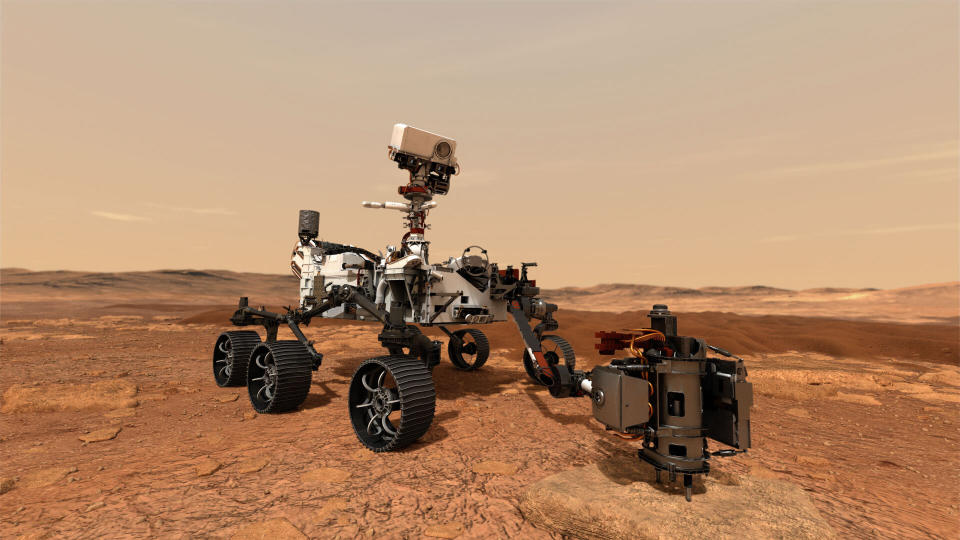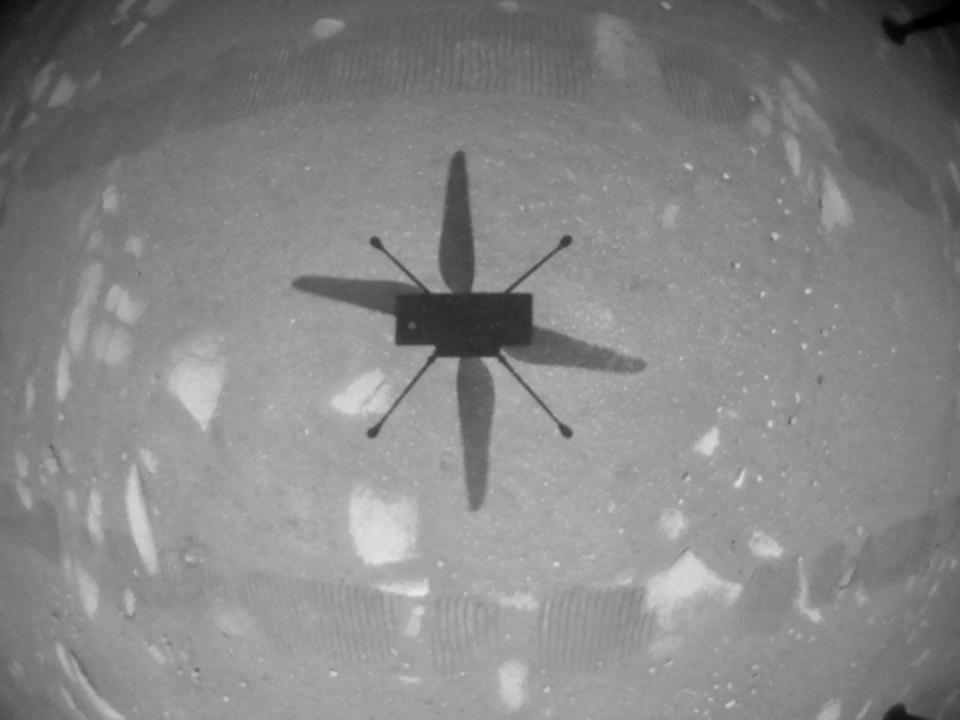NASA's Perseverance Rover Just Made Oxygen On Mars
In one “crucial first step” for life on Mars, NASA says an experimental device on its Perseverance rover has made oxygen by using the red planet’s carbon dioxide-rich atmosphere.
The device, called MOXIE, which is roughly the size of a car battery, produced 5.4 grams of oxygen on Tuesday within an hour’s time. That amount is enough to keep an astronaut alive for about 10 minutes of normal activity, NASA said Wednesday.
“This is a critical first step at converting carbon dioxide to oxygen on Mars,” said Jim Reuter, associate administrator for NASA’s Space Technology Mission Directorate (STMD). “MOXIE has more work to do, but the results from this technology demonstration are full of promise as we move toward our goal of one day seeing humans on Mars.”
NASA is preparing for human exploration of Mars. MOXIE - an experiment on @NASAPersevere - will demonstrate a way future explorers may produce oxygen from the Martian atmosphere. Stay tuned for data from this upcoming @NASA_Technology demo: https://t.co/YiB7UYSlkY pic.twitter.com/hJREIjLNIP
— Thomas Zurbuchen (@Dr_ThomasZ) April 20, 2021
The device, which is designed to generate roughly double what it produced on Tuesday, will ultimately need to be about 100 times larger than its current size in order to support human missions on Mars. Once it’s to proper scale, it would be able to not only provide breathable oxygen to humans but would allow the creation of liquid oxygen propellant that could be used for rocket fuel. NASA estimates that this Mars-made fuel could make up more than three-fourths of the propellant humans need for planetary exploration.
“Liquid oxygen propellant is something we could make there and not have to bring with us. One idea would be to bring an empty oxygen tank and fill it up on Mars,” said Michael Hecht, principal investigator at NASA’s Jet Propulsion Laboratory in Southern California.
This would spare astronauts from having to haul, from Earth to Mars, the tons of oxygen that are required for such rocket travel. Launching just four astronauts off the Martian surface, for example, would require 15,000 pounds (7 metric tons) of rocket fuel and 55,000 pounds (25 metric tons) of oxygen, NASA said.

“Hauling 25 metric tons of oxygen from Earth to Mars would be an arduous task,” NASA said in a statement. “Transporting a one-ton oxygen converter ― a larger, more powerful descendant of MOXIE that could produce those 25 tons ― would be far more economical and practical.”
MOXIE ― short for the Mars Oxygen In-Situ Resource Utilization Experiment ― works by collecting carbon dioxide (CO2), which makes up 96% of Mars’ atmosphere, and then electrochemically separating the CO2 molecules into oxygen (O2) and carbon monoxide (CO). The O2 is then analyzed for purity and, as part of this experiment, is then vented back out into Mars’ atmosphere along with the carbon monoxide and other exhaust products. The device requires extremely high temperatures of approximately 1,470 degrees Fahrenheit to complete this task, and so it is made up of heat-tolerant materials. Its exhaust is cooled before release, according to NASA.

MOXIE will likely extract oxygen at least nine more times over the course of a Martian year, which is nearly two Earth years, NASA said.
Trudy Kortes, director of technology demonstrations within STMD, praised MOXIE as not just the first instrument to produce oxygen on another planet but the first to sustainably generate products using another world’s environment. This process is known as in-situ resource utilization.
“It’s taking regolith, the substance you find on the ground, and putting it through a processing plant, making it into a large structure, or taking carbon dioxide ― the bulk of the atmosphere ― and converting it into oxygen,” she said. “This process allows us to convert these abundant materials into useable things: propellant, breathable air or, combined with hydrogen, water.”

MOXIE’s monumental feat comes a little more than two months after the car-sized rover Perseverance, which is touted as NASA’s most advanced rover yet, landed on Mars. One of the rover’s key objectives is searching for signs of ancient microbial life by studying the planet’s geology and past climate.
Since arriving on Feb. 18, the rover has provided scientists with a weather report, a high-definition color panorama of its landing site and the planet’s first audio recordings ― which include audio of it blasting rocks with a laser in an effort to determine the physical structure. On Thursday, NASA’s Ingenuity helicopter also completed its second experimental flight on Mars, an achievement that was filmed by Perseverance.
CORRECTION: A previous version of this story misstated that it would require 5,000 pounds of rocket fuel to launch four astronauts off the Martian surface. It would require 15,000 pounds.
Related...
NASA Successfully Lands New Mars Rover 'Perseverance'
The Sounds Of Mars: NASA Releases First-Ever Audio From Another Planet
NASA's Mars Helicopter Takes Flight
This article originally appeared on HuffPost and has been updated.


